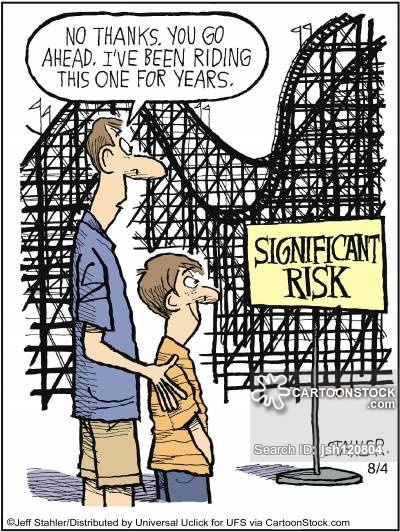Debunking the Myth of Form 15G and 15H
December 10, 2015
Explanation of “Mutual fund Investments are subject to Market risk”
December 24, 2015Santa Banta discussing Fed Rate
Santa: I have been hearing a lot about Fed Rate hike recently. What is this Fed Rate? Why is there a hike now? How was it before? What impact it will have on us?
Banta: Too many questions. Let’s go one by one.
Santa: Ok, then tell me what is Fed Rate?
Banta: In US (like in other countries) banks lend to and borrow from other banks as and when there is an excess cash reserve or there is a need for money. The rate at which one bank lend money to the other bank (for a very short term) is known as Fed Rate.
Santa: But such rate must be depending on demand and supply. How can this be influenced or controlled then?
Banta: Good question. The Fed (equivalent of our RBI) can influence this inter-banking overnight lending rate by buying or selling government securities.
If the Fed wants the federal funds rate (or Fed Rate) to decrease, then it buys government securities from a group of banks. As a result, those banks end up holding fewer government securities and more cash reserves, which they then lend out to other banks. That increase in the supply of available reserves causes the federal funds rate (or Fed Rate) to decrease.
When the Fed wants to increase the Fed Rate, it does the reverse open-market operation of selling government securities to the banks. As a result, those banks end up holding more government securities and less cash reserves. This decrease in the supply of available reserves causes the federal funds rate (or Fed Rate) to increase.
Santa: Ok, understood. But when and why this Fed Rate is increased or decreased?
Banta: See, when there is a change in Fed Rate (overnight inter-banking lending or borrowing rate) – cost of borrowing also changes. So if Fed Rate remains low, cost of borrowing would also remain low and vice versa. When the Fed predicts that the economy is moving toward a recession, it can boost economic activity in the short run by making borrowing less costly.
Santa: By decreasing Fed Rate, so that banks can get excess cash at lower rate.
Banta: Right. When banks get cash at lower rate, then they offer loans at lower interest rates to businesses and consumers. The cheaper credit in turn causes businesses and consumers to make more purchases, boosting sales and economic activity and putting the economy away from the recessionary trend.
Santa: So when does Fed increase the rate?
Banta: The Fed may choose to increase the federal funds rate if it predicts that the economy is heating up too much and causing prices to rise too rapidly (inflation). Increasing the cost of borrowing through the Fed Rate hike curbs demand and helps to reduce inflationary pressures in the short run.
Santa: So when was the last Fed Rate hike happened?
Banta: It happened in 2006. The US was hit by the crash in its housing market and banking sector between 2007-09. The Fed then felt that it needed prevent the economy from collapsing into a new Great Depression. One way of doing that was by cutting the cost of borrowing to rock-bottom levels i.e. by reducing Fed Rate.
Santa: So why now there is a possible hike?
Banta: One main indicator in doing that is US job market data. Unemployment rate has declined a lot and almost reached the pre-recession level. So there is an increase in hiring as well as in wages.
If at such times cost of borrowing is kept at low level, people will purchase more and there will be an increasing demand for goods and services. This will result in price rise i.e. inflation. Fed, at any moment does not want the rate of inflation to go beyond 2% rate. Inflation is already at 1.70% there.
Santa: How Fed Rate hike will affect us?
Banta: Before that let me tell you that Fed Rate is remained at near zero level for almost a decade now. Fed Rate hike, if it happens, will happen at slow rate and in phases.
Santa: I was asking you how it will affect us.
Banta: Yes. Coming to that. Few possibilities are there (Please note – I said ‘possibilities’, and not certainties).
First, rupee depreciation is likely to happen as there will be increasing demand for dollar now.
Second, Indian companies which have borrowed in dollar, will have to repay more now. This may affect their profitability and balance sheet.
Third, as US bond market rate is set to increase FIIs could take money out from emerging markets.
Santa: So that means there will be a crash in Indian stock market!
Banta: Very unlikely. Fed Rate hike will be minimum may be 0.25% to start with. Fed Rate may reach up to 2.50% by 2018 provided US job market data remains attractive and there is inflationary pressure in US consumer market. So such small hike in Fed Rate now is most likely already discounted in the market. Hence there is hardly any reason to worry now.
Remember, this is just another event. This too will pass.
